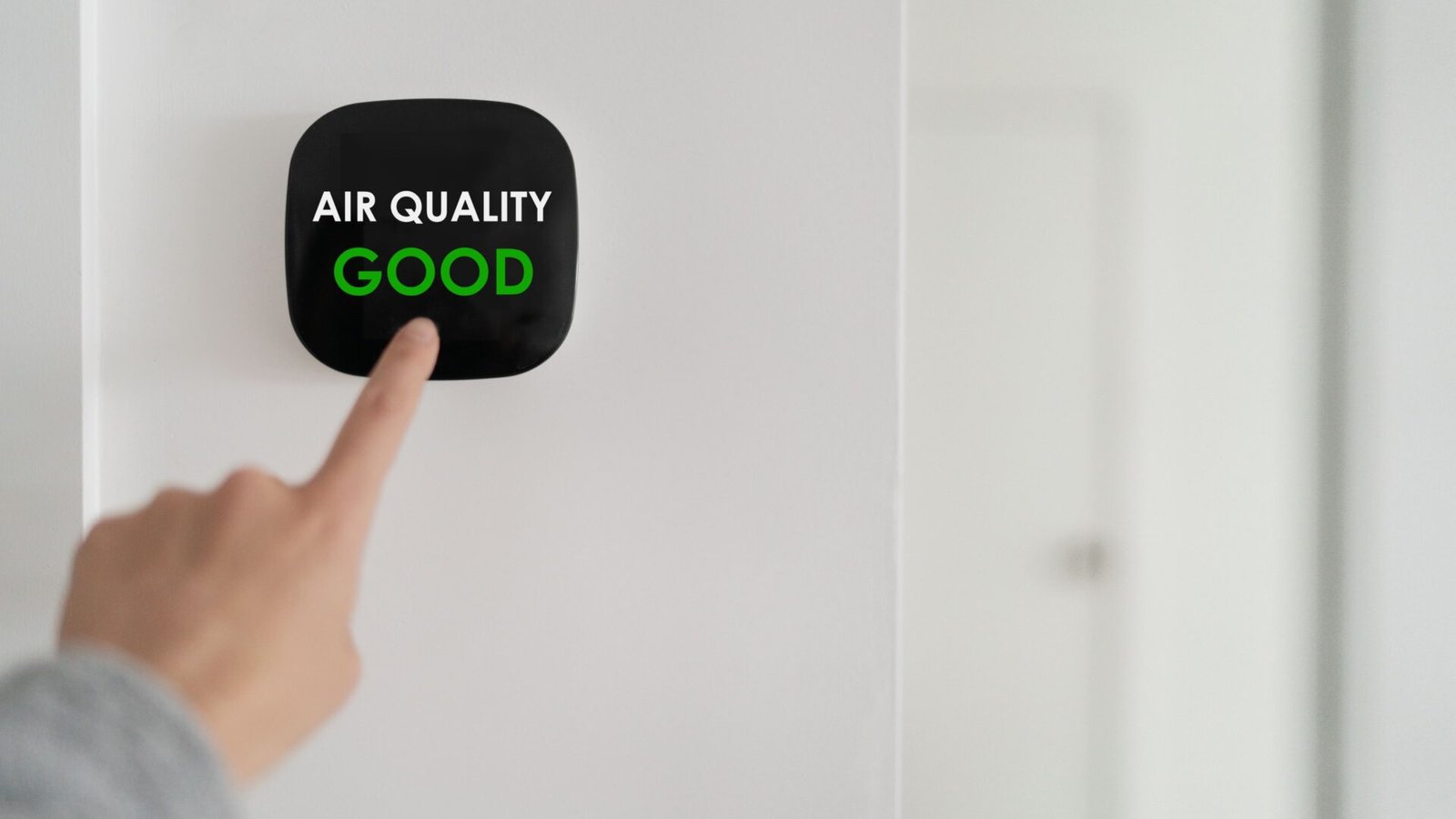Decision-makers consider outdoor air quality so important that 19 out of 27 EU countries have incorporated a healthy environment into their constitutions as a fundamental right. However, it is often forgotten that the need for good air quality does not stop at our doorstep, but also includes the air we breathe indoors – where we spend up to 90% of our daily lives. Several recent studies indicate that the air inside homes and buildings can be up to eight times more polluted than outdoor air, especially in industrialized cities.
Indoor air quality (IAQ) is a term which refers to the air quality within buildings and enclosed spaces, especially relating to the health of building occupants. Ensuring a good IAQ in residential buildings, such as houses and apartments, is crucial for the wellbeing of people in their homes, but also in non-residential structures such as offices, schools, shops, hospitals, and inside public transport. Indoor air pollutants include Volatile Organic Compounds (VOCs), Particulate Matter (PM) and viruses. Relative humidity also needs to be kept in an appropriate range to avoid an air too humid or too dry. CO2 - although not an indoor pollutant as such - gives a good indication of the extent to which indoor air is renewed with incoming fresh air from the outside.
A silent threat to public health
Although IAQ is often overlooked, it has a direct effect on respiratory conditions, mental health, and overall quality of life. The WHO estimates that 150,000 Europeans die prematurely every year due to poor IAQ.
Poor IAQ impacts health in both the short term – manifesting in immediate symptoms like coughing, sneezing, fatigue, and headaches – and long term. Over time, compromised IAQ is linked to respiratory issues like allergies, asthma, lung cancer, chronic obstructive pulmonary disease, respiratory infections, and cardiovascular disease. The risk is greatest for the most vulnerable people in our population – the elderly and young children – who tend to spend more time indoors than other members of society and are more sensitive to an inadequate air quality.
Preventing structural damage through mechanical ventilation
Everyday activities like cooking and bathing, as well as insufficient heating, promote a high level of humidity, with the average family generating around 10 litres of moisture per day. This can lead to mould growth, the spread of toxic spores and dust mites with adverse impacts on building occupants. Over time, this also contribute to building decay, costly repairs, and decreased property value, which could easily be avoided.
Many people open windows to renew indoor air, but this results in significant energy losses (hot air in the winter and cool air in the summer) and rapidly declining IAQ once they are closed. Moreover, many situations linked to security, acoustic, outside pollution, etc… do not allow to make use of them. The most effective solution to renew indoor air while minimizing energy losses to what is strictly necessary to contribute to maintaining a good IAQ is controlled mechanical ventilation.
Mechanical ventilation systems involve the use of fans and ducts to circulate and exchange air, ensuring an adequate flow of incoming fresh air in the least polluted rooms, while stale air is expelled outside of the building from the most polluted rooms. There are different types of ventilation systems: heat recovery ones minimize heat loss in winter and heat gain in summer, while demand-controlled systems adjust air renewal rates based on occupancy and air quality, optimizing energy use.
An ideal energy-efficient home is airtight thanks to appropriate insulation, with a mechanical ventilation system renewing the air in a controlled way, thereby contributing to ensuring a good indoor air quality, keeping occupants healthy and buildings in good shape.
No compromise needed between energy efficiency and indoor air quality
Mechanical ventilation is often forgotten as we invest in our heating and building envelope, and this is particularly detrimental due to the dramatic increase in the airtightness of new and renovated buildings. While making buildings more airtight will indeed ensure they are more energy efficient, it will also make it much harder for polluted air to escape due to the tightness of the building envelope - which is why a mechanical ventilation system is crucial to ensure a sufficient but controlled air renewal.
Buildings account for approximately 40% of the EU’s overall energy consumption and 36% of the EU’s overall emissions of greenhouse gas. Mechanical ventilation systems limit energy losses in buildings, thereby optimising their heating and cooling needs and overall energy performance. This also allows households to save on these costs. In fact, buildings fitted with a mechanical ventilation system reduces their energy needs by between 15 and 26% compared to those which are not equipped (calculated according to the French administration’s energy saving certificate scheme - relative to humidity demand control ventilation BAR-TH-127).
As approximately 70% of all buildings that will be existing in 2050 have already been built, it is important to consider not only new dwellings but also the renovation of existing ones, which should also benefit from improved IAQ and optimised energy needs.
Making healthy citizens and durable buildings a policy priority
Following the recent revision of the Energy Performance of Buildings Directive (EPBD), requiring member states to define indoor air quality requirements in their national legislation, a very significant step forward has been made to tackle the health issue in buildings. By requiring mandatory inspection of stand-alone ventilation systems, the new EPBD will also ensure their optimal performance, allowing to help deliver an adequate indoor environment and tap into the significant energy saving potential of the existing building stock. The next step will be to ensure adequate transposition in national legislation, for the EPBD to drive much-needed improvements to European buildings in these two areas.
Beyond the EPBD, EU policymakers should consider integrating IAQ monitoring and ventilation data within the Building Stock Observatory (BSO), completing the ecodesign requirements update to ensure energy-efficient ventilation systems, and embedding IAQ requirements into public procurement and taxonomy legislation. Ultimately, ventilation and adequate-quality indoor air should be recognized as an essential component of public health, energy policy, and building standards, much like outdoor air quality and water access are today.








